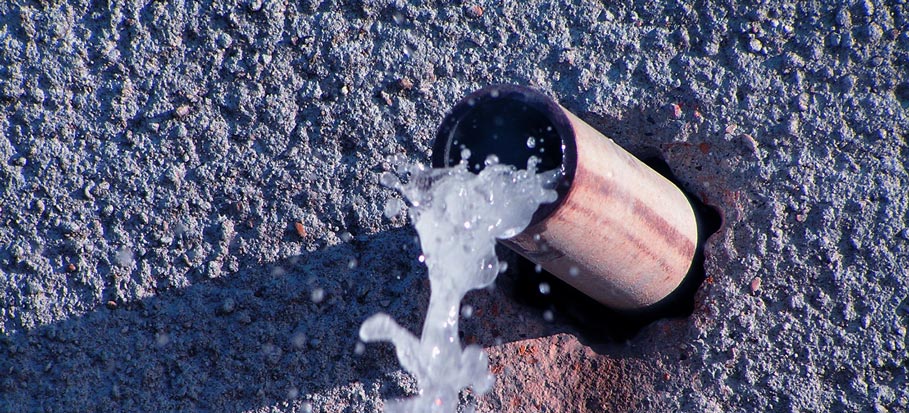Are you searching for advise concerning Locating water leaks?

Early discovery of dripping water lines can mitigate a potential disaster. Some tiny water leakages may not be noticeable.
1. Check Out the Water Meter
Every home has a water meter. Examining it is a guaranteed manner in which helps you uncover leakages. For beginners, switch off all the water resources. Make certain nobody will flush, make use of the faucet, shower, run the cleaning maker or dish washer. From there, most likely to the meter as well as watch if it will certainly transform. Because no person is utilizing it, there ought to be no activities. If it relocates, that shows a fast-moving leak. Similarly, if you find no changes, wait a hr or two as well as examine back once again. This suggests you might have a sluggish leakage that might even be underground.
2. Inspect Water Usage
Analyze your water costs and also track your water consumption. As the one paying it, you should notice if there are any kind of disparities. If you identify sudden changes, despite your usage coinciding, it suggests that you have leaks in your plumbing system. Remember, your water bill need to drop under the exact same variety on a monthly basis. A sudden spike in your expense shows a fast-moving leak.
A steady boost every month, also with the same routines, shows you have a sluggish leak that's additionally gradually rising. Call a plumber to completely check your building, especially if you feel a warm location on your floor with piping below.
3. Do a Food Coloring Test
When it comes to water usage, 30% comes from commodes. If the shade in some way infiltrates your bowl throughout that time without flushing, there's a leak between the storage tank and bowl.
4. Asses Exterior Lines
Don't fail to remember to examine your outdoor water lines too. Test spigots by connecting a garden tube. Needs to water seep out of the connection, you have a loose rubber gasket. Change this and also make certain all links are limited. It will assist get it professionally took a look at and maintained yearly if you've obtained a lawn sprinkler system. One small leakage can waste lots of water and also spike your water bill.
5. Examine as well as Examine the Situation
Home owners should make it a routine to examine under the sink counters and also even inside closets for any bad odor or mold and mildew growth. These two red flags indicate a leak so timely focus is called for. Doing routine inspections, also bi-annually, can conserve you from a major trouble.
If you recognize your home is currently old, keep a watchful eye on your heaters, hose pipes, pipelines and so on. Look for stainings and compromising as many appliances as well as pipelines have a life span. They will certainly additionally naturally weaken because of wear and tear. If you believe leaking water lines in your plumbing system, do not wait for it to escalate. Call a professional plumber as soon as possible so you do not end up with a horrible mess in your home.
Early discovery of leaking water lines can alleviate a potential catastrophe. Some little water leaks might not be visible. Checking it is a proven means that aids you uncover leakages. One small leak can waste tons of water as well as spike your water costs.
If you suspect dripping water lines in your plumbing system, don't wait for it to rise.
WARNING SIGNS OF WATER LEAKAGE BEHIND THE WALL
PERSISTENT MUSTY ODORS
As water slowly drips from a leaky pipe inside the wall, flooring and sheetrock stay damp and develop an odor similar to wet cardboard. It generates a musty smell that can help you find hidden leaks.
MOLD IN UNUSUAL AREAS
Mold usually grows in wet areas like kitchens, baths and laundry rooms. If you spot the stuff on walls or baseboards in other rooms of the house, it’s a good indicator of undetected water leaks.
STAINS THAT GROW
When mold thrives around a leaky pipe, it sometimes takes hold on the inside surface of the affected wall. A growing stain on otherwise clean sheetrock is often your sign of a hidden plumbing problem.
PEELING OR BUBBLING WALLPAPER / PAINT
This clue is easy to miss in rooms that don’t get much use. When you see wallpaper separating along seams or paint bubbling or flaking off the wall, blame sheetrock that stays wet because of an undetected leak.
BUCKLED CEILINGS AND STAINED FLOORS
If ceilings or floors in bathrooms, kitchens or laundry areas develop structural problems, don’t rule out constant damp inside the walls. Wet sheetrock can affect adjacent framing, flooring and ceilings.
https://www.servicemasterbyzaba.com/blog/how-to-detect-water-leakage-in-walls/

Do you really like more info about Detecting hidden plumbing leaks? Try to leave a comment below. We would be interested to find out your responses about this blog. We are looking forward that you come back again soon. Do you know about another person who is occupied with the niche? Feel free to share it. Thanks a lot for taking the time to read it.